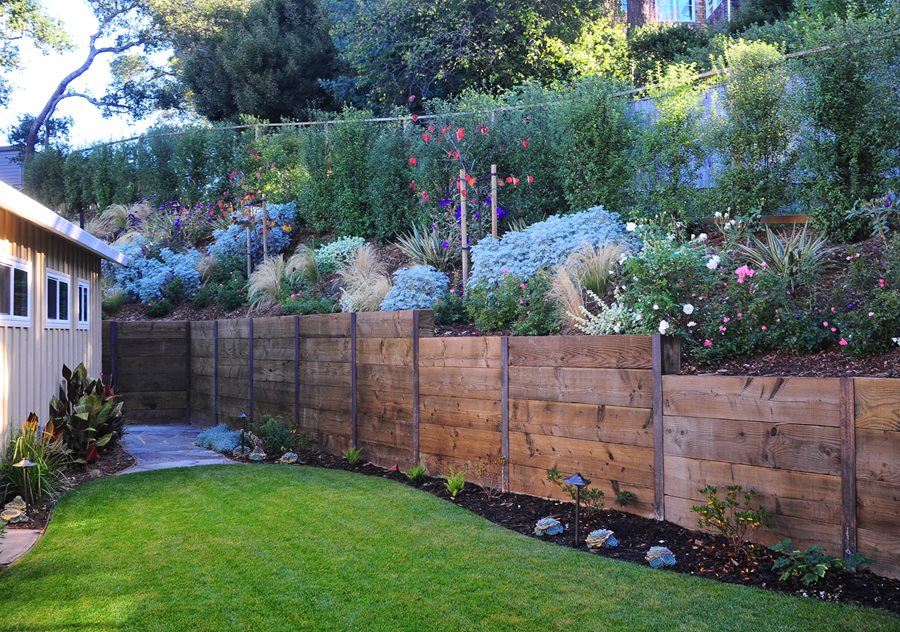How timber retaining walls are used in the landscape
In most cases, it’s the simple construction and low costs that make timber retaining walls the most common choice for do-it-yourself home improvement. This kind of wall is also an affordable way your landscape contractor can control short slopes that may erode or prove unstable over time. In recent years the demand for raised bed food gardens has brought a lighter version of this retaining wall into many new landscape projects.
In the right setting, a timber retaining wall blends into a landscape more naturally than any other material. When stained to match a log or cedar clad home, it carries the house materials into the landscape for a more unified appearance. In the woodland garden, they are particularly beautiful, composed of the very trees that surround them.


To maximize your timber wall longevity, the contractor must pay close attention to water, where it gathers and pools both on top and behind the wall. The accumulation of moisture speeds the decomposition of wood, so drainage structures are very important as is the overall grades both at the top and toe of the wall.
The best kind of lumber for these walls is Douglas fir pressure treated with preservatives to discourage rot. It will be green or brown in color and rated for earth-to-wood contact. For timber walls, large timbers for can be very expensive, which is why railroad ties are a common alternative. These recycled ties are more affordable than new lumber with increased weight and stability. Railroad ties are heavily treated with potentially toxic wood preservatives and creosote. The disadvantages are a chemical odor when superheated by summer sun.